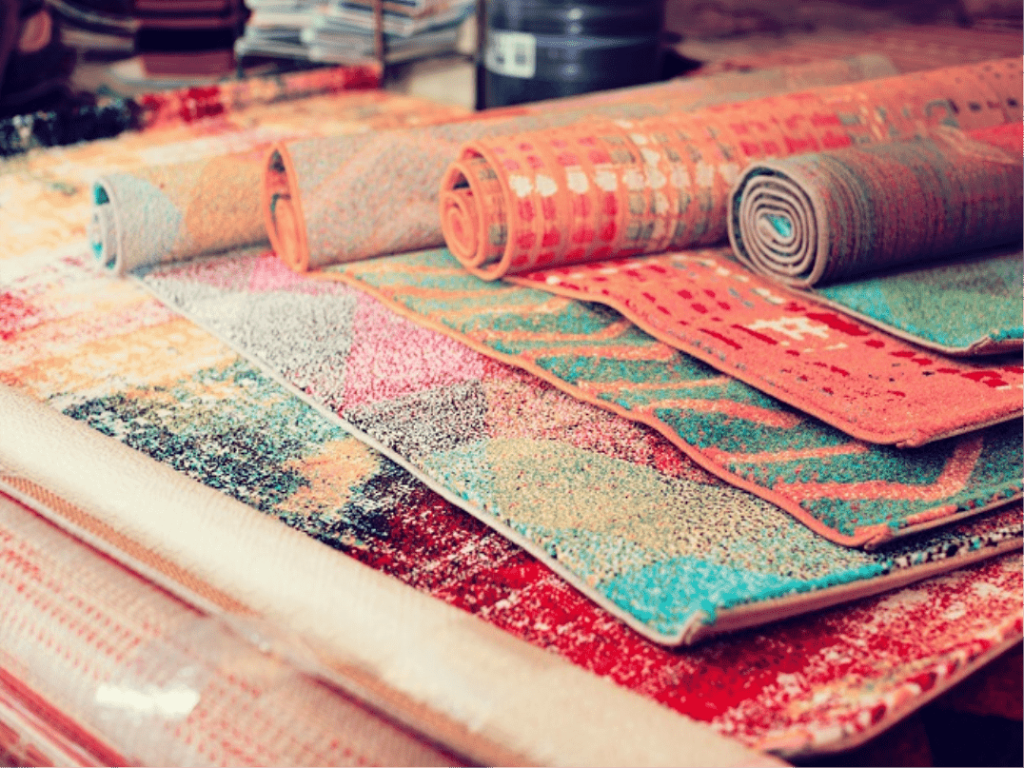Arabian rugs seem to have had a special, sentimental place in homes all over the world for hundreds of years. In fact, it was the whole plot summary behind the 1998 Coen Brothers cult film, “The Big Lebowski”, where the story’s protagonist, Jeff “The Dude” Lebowski, seeks restitution for his ruined (and later stolen) Arabian rug and enlists his bowling buddies to help get it back. The tag line for the film? “All the Dude ever wanted was his rug back.” Sentimental, indeed!
Ancient Egyptian Rugs
The history of Arabic rug making is a very interesting one, and it starts in ancient Egypt. Fresco images dating from around 3000 BC illustrate weavers making rugs on a loom. Other images of rug weavers have been discovered in Egyptian tombs. There’s even the story of Cleopatra, the last Pharaoh of Egypt, being carried to Caesar rolled up in a rug. Carpets are also woven into the mythology and folklore of the Arab world. (Who hasn’t heard of Aladdin’s magic carpet?) Even today, these stories entertain and captivate people from all around the globe.
The Arabian World of Rugs
When we speak about Arabian rugs, what exactly do we mean? Well, we don’t mean the carpets made exclusively in Saudi Arabia, but rather the 22 Arabic speaking countries of Northern and East Africa and the Middle East. Though we can identify these countries today, the Middle East has changed a lot since then. Seemingly never-ending conflicts and ever shifting borders over the millennia and their impacts on the development of the arts in the region can make exploring the history of Arabian carpets a bit difficult sometimes.
However, today when we speak of Arabian carpets, we mean those from Egypt, Algeria, Tunisia, Somalia, Kuwait, Saudi Arabia and Arab League nations. Coming from such a wide variety of countries, Arabian carpets can include a variety of designs, colors, and techniques influenced by African, Persian, Turkish, European, Oriental, and Bedouin designs.
Procedures and Practices
Arabian carpets are usually made from whatever material is locally available to the weavers. Though most are primarily made of wool, Arabian carpets can also be made out of a variety of textiles including cotton, flax and linen from northern Egypt. Some areas even make carpets from camel and goat hair and there are some that are even made of silk. Of course, those living in areas with access to land and sea trade routes have a greater selection of materials than those who live in more out-of-the-way areas.
Although, designs and techniques are traditionally passed down from generation to generation, today there are more modern weaving schools and centers. However, the technique for making rugs is still pretty much the same – a warp is strung vertically on a loom, then after pattern or cartoon (not a picture of Mickey Mouse or Spongebob Squarepants, but a full-size drawing made by the weaver as a preliminary design) is made, knots are tied on the warp. Then, one or two rows are woven to keep the knots in place and this is repeated until the rug is finished.
Arabian Rug Designs
Arabian rugs are known for the vivid, almost electric, colors and intricate designs consisting of a field of interlocking geometric shapes. Arabic calligraphy is also often used in the design of Arabian rugs. Sometimes you can even find medallion rugs like those frequently found in Persia. All of these designs symbolize the role of multiple cultural influences on Arabian rug designers and in turn, the influence of Arabian rug artists on the rest of the world. For example, rugs made in Damascus appear in 16th century Italian paintings.
Indeed, Arabian rugs made in the Middle East are fascinating, diverse and unlike any rugs found in other parts of the world. The history of the region, it’s changing orders, and cultural influences have led them to be a unique group of rugs that have continued to awe and inspire both the artists that create them and the interior designers that use them to make a house a home around the world.
If you enjoyed this article and want to know more about Arab culture or want to learn Arabic language skills, why not head over to kaleela.com to find out more. While you’re there, you can download the Kaleela Arabic language learning app. We’re not pulling the rug out from under you when we say it’s the best Arabic language learning app available for download today!




